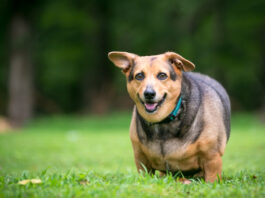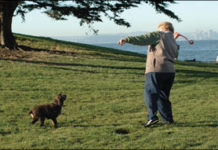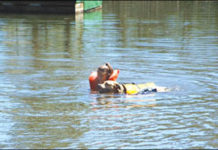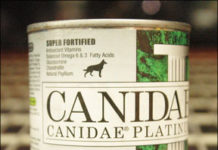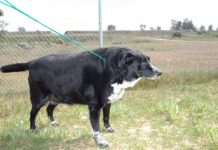The 3 Most Common and Preventable Canine Maladies
What is the worst part about these strikingly common conditions dogs get? They are all entirely preventable. Obesity, periodontitis, and overgrown nails affect more dogs in the United States than any other diseases, and can be just as harmful.
10 Weight Loss Tips for Senior Dogs
Older dogs, like older people, have an easier time getting around if they aren't overweight. Losing weight can be a challenge for dogs at any age, but more so as dogs grow older. Still, weight loss for dogs is worth the effort. Slender dogs not only get around more easily, but also actually live longer. A 14-year study showed that dogs fed 25 percent fewer calories than their free-fed littermates lived nearly two years longer, showed fewer visible signs of aging, and enjoyed an extra three years of pain-free mobility before developing canine arthritis.
Treating Your Dog’s Hypothyroidism
Hypothyroidism (underactive or low thyroid) is a common disorder in dogs. A variety of breeds are known to be genetically predisposed, including the Labrador Retriever, Golden Retriever, Dachshund, Boxer, Doberman, and Cocker Spaniel. (It's normal for sighthounds such as the Greyhound to have relatively low thyroid levels as a result of their unique physiology; these levels are not a sign of pathology in these breeds.)
29 Dog Breeds Predisposed to Hypothyroidism
These 29 dog breeds are the top most inclined to develop hypothyroidism as they age.
Keeping Your Dog Thin is a Lifesaver
but he looks and acts much older. He's at high risk of a short
Managing Diabetes in Dogs
What causes diabetes in dogs? Diabetes is one of the most common endocrine diseases affecting middle-aged and senior dogs, with 70 percent of patients older than seven at the time of diagnosis. Diabetes in puppies hardly exists - diabetes rarely occurs in dogs younger than one year of age, and it is more common in females and neutered males than in intact males. Keeshonds, Pulis, Cairn Terriers, Miniature Pinschers, Poodles, Samoyeds, Australian Terriers, Schnauzers, Spitz, Fox Terriers, Bichon Frise, and Siberian Huskies may be at higher risk.
Helping Your Dog Lose Weight
When Ella, a five-year-old Norwich Terrier, first came to live with me a few months ago, she weighed a svelte 10.8 pounds. But within two months her weight had ballooned by almost a full pound, and there was no way you could call her anything but plump. How could this happen? How could I have let my new dog get fat me, the one who perpetually preaches the benefits of keeping dogs lean? And what the heck was I going to do about it? The answer is that it happened because Id never owned such a small dog before, and it turned out I was massively overfeeding her, particularly when I counted all the treats she was getting. And I would do whatever it takes to get her back to the weight she should be, and keep her there. Here is what I learned during my struggle to help Ella lose weight.
Canine Swimming Lessons: The Perfect Exercise For Your Dog
For those of us who regularly swim for fitness, we know why swimming is often referred to as “the perfect exercise.” In addition to the physical benefits shared with other forms of aerobic exercise, swimming offers some unique benefits. It eliminates the effects of weight-bearing on the joints, exercises the entire body – upper and lower – at the same time, and, in most cases, is something we can do for our entire lives, even if age precludes us from taking part in other forms of exercise. The physical benefits of swimming are the same for your canine companion as they are for you – that is, if you have a dog who will swim. Even though they actually have a stroke named after them, the notion that all dogs are “natural swimmers” is an erroneous one. Some breeds were developed to work in water and are more physically adapted for swimming than others. The problem here is not getting these dogs into the water, but keeping them on terra firma when we want them to stay clean and dry. However, occasionally, even a water breed shows disdain for water – yes, there are some Labrador Retrievers who hate swimming. Conversely, there are dogs you’d never imagine taking kindly to the water who become devoted and skilled swimmers. Although not blessed with the physical advantages of a water breed, and despite sinking rear ends or heavy, wet coats, these Boston Terriers, Rhodesian Ridgebacks, and Siberian Huskies have learned to enjoy swimming. They don’t know or care that they have to work a little harder than a Poodle, Cocker Spaniel, or a Newfoundland – they just want to have fun!
Healthy Low-Fat Diets For Dogs With Special Dietary Needs
Some low-fat recipes for dogs are excessively low in fat, providing as little as 5 to 8 GFK, with as much as seven times more starches than meat. With very few exceptions, its not necessary to feed such an extremely low-fat diet to dogs recovering from or prone to pancreatitis or with other forms of fat intolerance, nor is such a diet likely to be nutritionally adequate, regardless of how many supplements you add.
Canine Pancreatitis
Pancreatitis literally means inflammation of the pancreas, the glandular organ that secretes enzymes needed to digest food. When something causes these enzymes to be activated prematurely, they can actually begin to digest the pancreas itself, resulting in pain and inflammation. Pancreatitis occurs in two different forms, acute and chronic, and both may be either mild or severe. Acute pancreatitis occurs suddenly and is more often severe, while chronic pancreatitis refers to an ongoing inflammation that is usually less severe and may even be subclinical (no recognizable symptoms). Acute pancreatitis can be extremely painful, and can become life-threatening if the inflammation spreads, affecting multiple organs and systems. Symptoms commonly include anorexia (loss of appetite), vomiting, weakness, depression, and abdominal pain. Abdominal pain in a dog may be exhibited as restlessness or not wanting to move; a hunched appearance or a praying position, with the chest down and the rear raised; or vocalization (crying or whimpering). Additional symptoms may include diarrhea, drooling, fever, and collapse.
A Healthy Pancreas for Canine Diabetes Prevention
The pancreas is an elongated gland, light tan or pinkish in color, nestled alongside the small intestine and adjacent to the stomach. The organ is composed of two functionally separate types of glandular tissue, each which performs a vital and disparate role in the dog's body.
Help for Dogs With Hypothyroidism
Many people are aware that hypo-thyroidism (low thyroid function) is a medical condition that can cause an afflicted dog to become lethargic, dull, and fat. But far too few dog owners are aware of the behavioral symptoms that hypothyroid can cause. This is unfortunate, since these symptoms include unexplainable aggression, so-called rage syndrome





